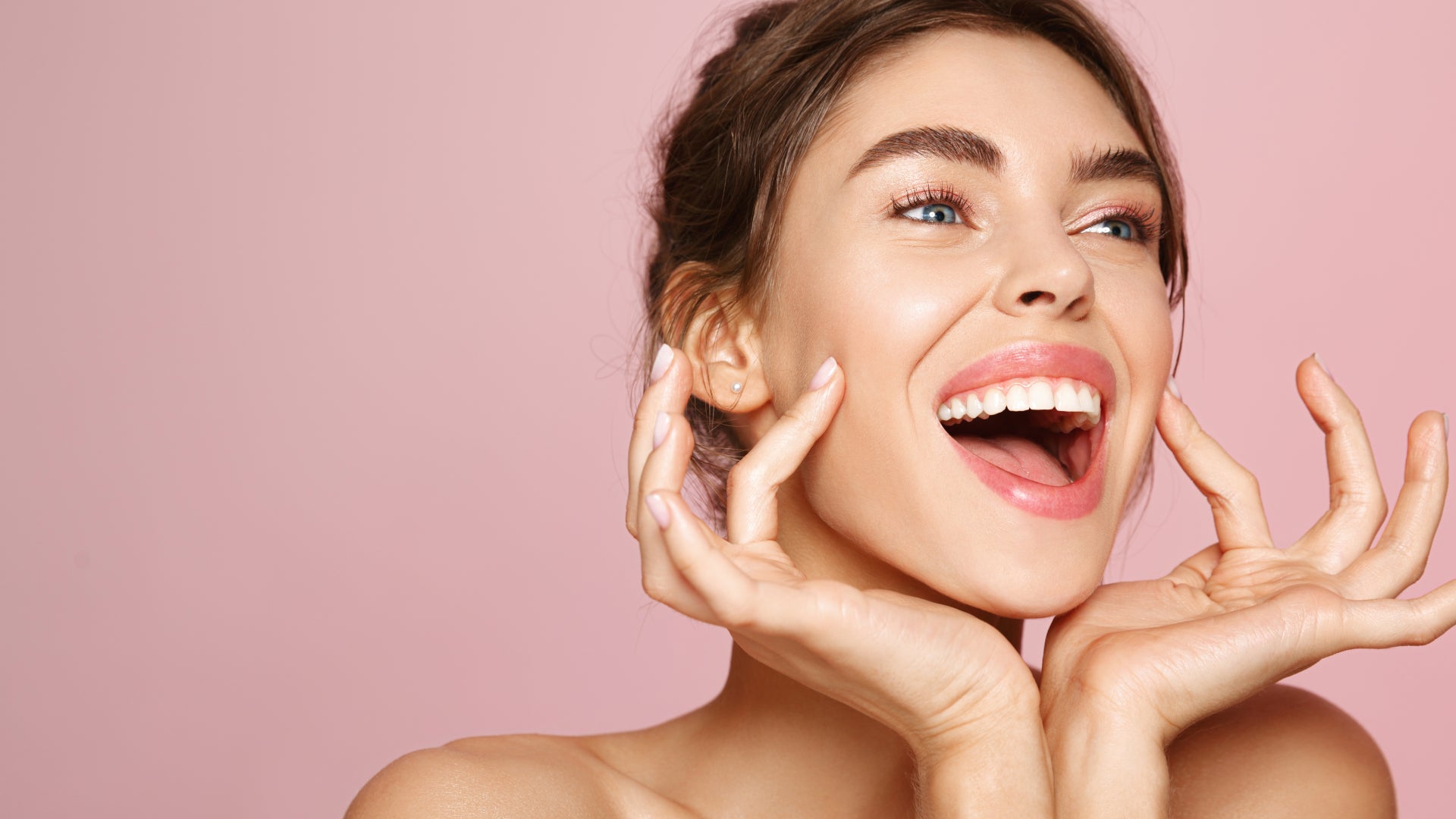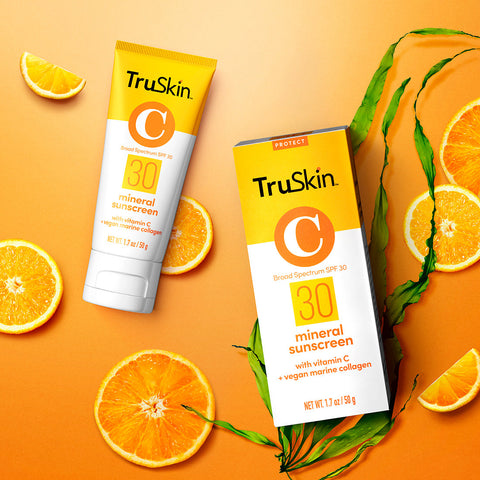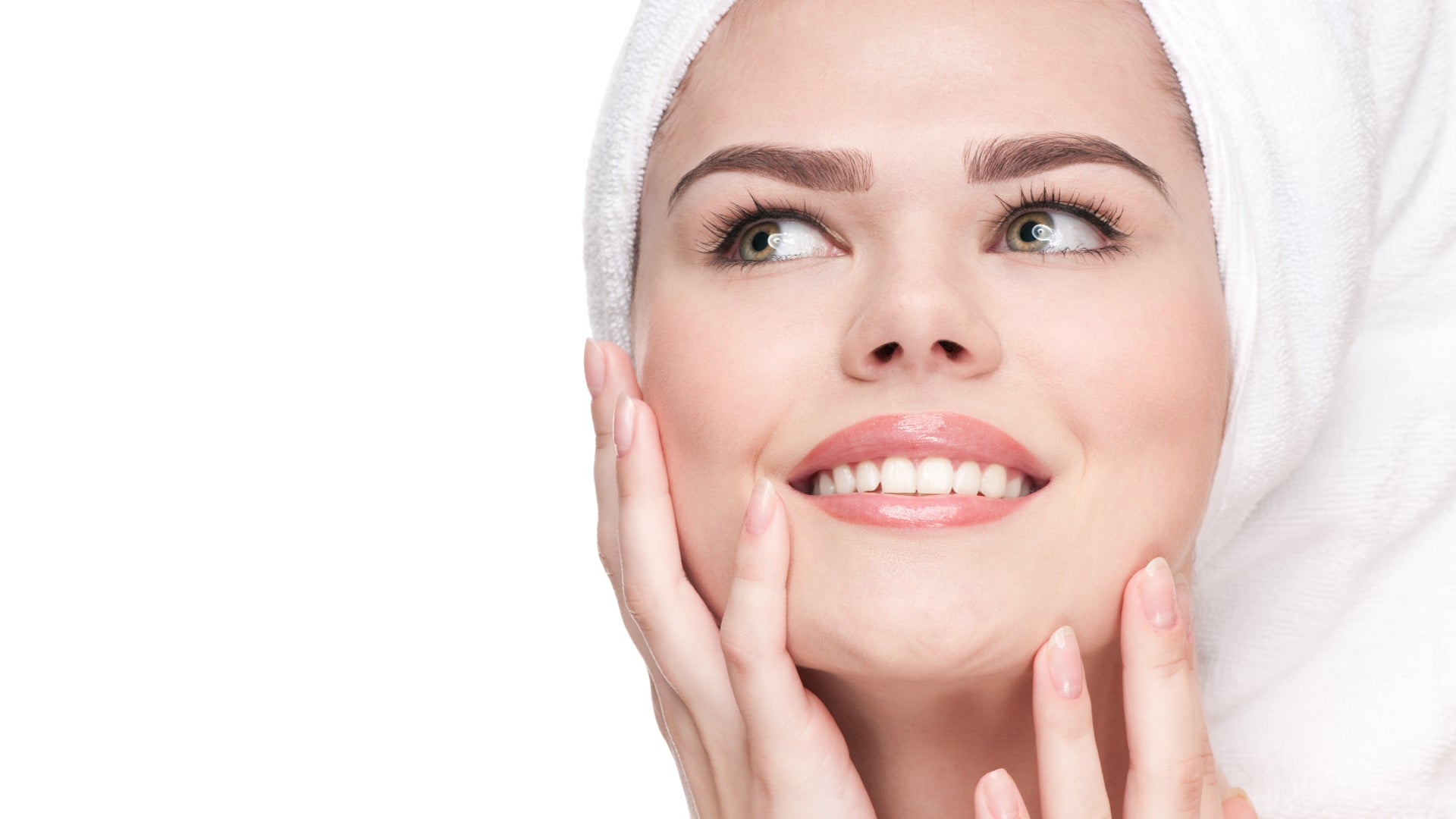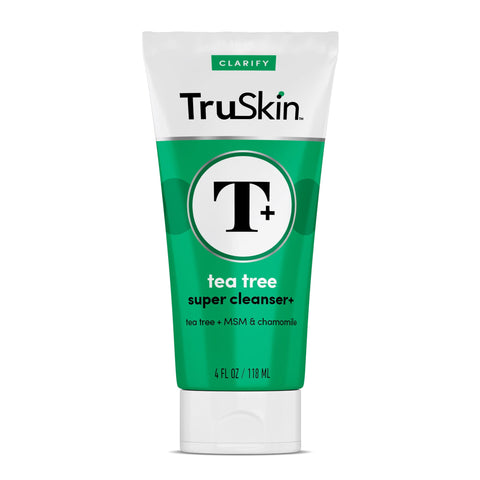
True Radical Honesty From Our Community
What To Do If You Hate Those Fine Lines Around Your Lips
Read MoreAdvice for all of your skin care needs
- all articles
- Acne
- Anti-Aging
- Collagen
- Combination Skin
- Company Announcements
- dry skin
- Exfoliation
- Eye Care
- Facial Redness
- Grooming
- Holidays
- Hyaluronic Acid
- Niacinamide
- Oily Skin
- Retinol
- Sensitive Skin
- Skincare
- Skincare Guide
- Skincare ingredients
- Skincare Routine
- Skincare Tips
- Sun Protection
- Toner
- Vegan Skincare
- Vitamin C
- view all
- Acne
- Anti-Aging
- Collagen
- Combination Skin
- Company Announcements
- dry skin
- Exfoliation
- Eye Care
- Facial Redness
- Grooming
- Holidays
- Hyaluronic Acid
- Niacinamide
- Oily Skin
- Retinol
- Sensitive Skin
- Skincare
- Skincare Guide
- Skincare ingredients
- Skincare Routine
- Skincare Tips
- Sun Protection
- Toner
- Vegan Skincare
- Vitamin C
-
Consistency is our favorite word when it comes to a boss skincare routine. So why should you mess with yours just because the weather’s changed? Simple, because, er, the weather has changed.
Whether you subscribe to seasonal skincare or not, one thing’s for sure, skin becomes drier and more sensitive in the winter time.
Winter, for most of us, means colder, drier weather which can be tough for your delicate skin to take. Extreme temperatures – especially when you flip-flop between frigid temperatures outdoors and balmy ones inside – stress out your skin and compromise its critical barrier function. Then there’s the lack of humidity which starves your skin of vital moisture and, well, stresses out your skin and barrier function even further.
However, as you know, we’re all about sticking with a consistent skincare routine, all year round. So what should you do in winter to ensure you’re not causing potential upset to your tried and tested routine, but you’re still giving your skin the extra care it needs to make it through the chilly months?
The answer: make small tweaks rather than massive changes. Here's how.
1. Add In An Extra Layer Of Moisture
A certain level of dryness and dehydration is pretty much a given in the winter months – whatever your skin type – but if you’re like us and hate to give up your trusted moisturizer, the good news is, you don’t have to. Instead, layer up by applying a thirst-quenching serum underneath your regular moisturizer each morning. This will help draw water to the surface of your skin, giving it a much-needed boost without having to apply an overly rich moisturizing cream (which, let’s face it, can ruin your makeup!).
We have tons of fabulously hydrating serums that are perfect for winter-parched skin. Hyaluronic Acid Facial Serum is a classic favorite because it combines glycerin, aloe and hyaluronic acid – three of the best hydrating ingredients in skincare. Peptide Facial Serum is another great choice as it really cares for your barrier function while kick-starting sluggish collagen and bringing all sorts of hydration and protection to the skin’s lower layers.
Take your pick, you really can't go wrong with either.
2. Pair Back The Actives
With little moisture in the air for your skin to enjoy during the winter months, the surface of your skin inevitably becomes more dehydrated, dry and sensitive. Of course, if you’ve managed to crush the perfect moisturizing routine for your skin type, this might not be relevant to you, but for the rest of you, it’s wise to be careful with any active ingredients you apply on a regular basis.
Retinol is the obvious culprit for sensitizing the skin so if you apply a retinol product daily, give yourself a break one or two nights a week, swapping it out for something equally as fabulous for your skin – but not quite as potent. Our Niacinamide Facial Serum, for example, is a great option for nights off as it still targets skin aging but is gentler and contains soothing and hydrating ingredients like vitamin E and hyaluronic acid. It's officially awesome for winter skin.
Vitamin C is another one to be cautious around. Of course, our vitamin C formulations contain a gentle type of vitamin C called sodium ascorbyl phosphate which is very kind to the skin and extremely well tolerated by all skin types, all year round. But if you do find your skin feeling a bit winter worn, give it a break for a few days; concentrate on building moisture and hydration back into your skin instead.
3. Focus On Overnight Repair
Skin naturally produces less sebum overnight, so during winter, when there’s a serious lack of moisture in the air, it’s more important than ever to treat your skin with some nourishing overnight respect.
First up, invest in a bedroom humidifier to combat any dryness in the air caused by your indoor heating. Then focus on a really good, quality night cream.
The best night cream for winter must contain a number of emollient or occlusive ingredients. These create a barrier on the surface of your skin to help prevent moisture loss and protect your skin from drying out as you sleep. Try Vitamin C Deep Hydration Night Cream which balances a whole bunch of botanical oils including organic sunflower, coconut and evening primrose (to name just a few!). It also contains our favorite under-the-radar ingredient, MSM, a naturally-occurring sulfur compound which supports collagen and keratin production while limiting inflammation and protecting your skin from damaging free radicals.
4. Alternate Your Cleanser
Do you love your regular cleanser more than life itself? We hear you. But in the winter, when your skin is a little more compromised than normal, you need to tread very carefully with your cleansing routine.
Cleansers play a pivotal role in your skin’s moisture balance. Go too harsh and you will strip all the life from your skin, leaving it sucked dry and prone to irritation, flaking, itchiness and redness. We recommend gentle cleansing all year round, but in the summertime when your skin is oilier and sweatier it can take a bit more than in the winter.
Our trick, once warm days become a distant memory, is to alternate our go-to cleanser with something more mild and caring, especially for the mornings when all you’re really doing is freshening up your skin and removing any minimal surface debris that’s built up overnight. We reach for Soothing Cleansing Milk every morning in the winter. Dry, sensitive skin is basically its middle name. Plus it feels like a comforting hug for your skin as soon as you apply it. And we are all over that.
5. Stay Sun Safe
One thing you shouldn’t change? Your impeccable sunscreen regime. Just because you can’t see the sun shining away in the sky every day in winter, it doesn’t mean it’s not there. Daylight simply doesn’t exist without the sun, remember that. What’s more, reflective surfaces like snow and ice intensify the sun’s damaging rays by reflecting them right back onto your skin, allowing them to get you from all angles.
Apply a broad-spectrum sunscreen to exposed skin every day – come rain or shine – and go for an SPF of at least 30 to ensure you are well protected from both UVA and UVB radiation. Studies show that, while clouds do protect you from a small percentage of the sun’s UV rays, up to 80 percent of UVA rays (the ones that age you up) are able to penetrate right through.
Make our SPF 30 Mineral Sunscreen with Vitamin C a part of your morning routine and it’ll soon become a habit you don’t even think about. Just like cleaning your teeth and brushing your hair.
Honest Question: Do You Really Need To Switch Up Your Skincare Routine In Winter?
read more -
Do you feel like your already-supersized-pores are growing by the minute? They're not. But it might feel like they are...
Pores are the foundation of healthy skin. Of course, collagen makes your skin strong, supple and plump. And yes, elastin gives it that all-important bouncebackability. But without pores, your skin would be a dry, shrivelled up shadow of its former self. Not to mention the fact that your entire body would lose its ability to regulate its own body temperature.
As a quick reminder, pores are tiny, microscopic openings found at the surface of your skin right at the top of your hair follicles and sweat glands. They exist to allow important liquids (as well as other particles and gases) to pass through the surface of your skin. The human body has two types of pores: sweat pores which help regulate body temperature; and oil-producing pores that are found at the top of your hair follicles where they release sebum to moisturize and lubricate the surface of the skin. The good thing about sweat pores is that they’re so small you can’t see them making them of very little concern in the grand scheme of things.
Oil-producing pores, on the other hand, are just so annoyingly visible. So why?
What Determines The Size Of Your Pores?
Like your height, skin tone and color of your hair, the size of your pores is largely shaped by genetics. This means that yes, you can blame your parents, and yes, the size of your pores is pretty much fixed.
Of course, this is great news if you have almost invisible pores. Not so much if yours feel like they take over your entire face. But let’s get one thing straight: no matter how enlarged you believe your pores are when you study them in the mirror, they’re rarely as bad as you think. Because the truth is, nobody else scrutinizes your skin on the same level as do you.
Do Pores Get Bigger Over Time?
Yes and no. The size of your pores never really changes on a physiological level. So yes, all those half-truths about being able to ‘shrink’ your pores with alcohol-heavy toners or freezing cold water is a bit of a con. But there’s a little bit of truth in there because while the actual size of your pores doesn’t alter, their walls can stretch and expand, making them appear more pronounced.
Penny drops.
What Causes Pores To Stretch With Age?
Many things happen to your skin throughout your life that can cause the walls of your pores to become damaged and loose. Of course, regular aging plays the most obvious role as your collagen levels naturally decrease over time. Sadly, there’s not a huge amount you can do about your biological clock (there’s those genes doing their worst again!) but there are many other factors of which you can control that contribute to the rate at which your pores become slack.
Sun Damage
Gosh, the sun gets blamed for a lot of skin issues. But we don’t apologize for that because it really is one of the worst things for the condition of your skin. UV radiation breaks down important proteins like collagen and elastin thanks to a build-up of free radicals. This weakens the collagen fibers that give your skin its structure, thus allowing the walls of your pores to become slack, weak and kind of baggy-looking. AKA more visible!
Picking Your Skin
If you have a tendency to pick or squeeze your skin, this not only irritates your skin as a whole, but it can seriously mess with the collagen and elastin fibers that keep your skin firm and supple. Scarring is the most obvious possibility from picking your skin, but you pores will also suffer as a consequence.
Excess Sebum
After puberty sebum production usually levels out to a somewhat more ‘normal’ rate. However, things can get messy again during significant hormonal changes in your life. Menstruation, pregnancy, the menopause, all of these periods in your life cause your hormones to become unbalanced and your sebum levels to fluctuate. And when sebum production increases it fills up your pores causing them to expand, stretch and appear bigger.
Slow Cell Turnover
When you’re in your 20s each skin cell has a life cycle of around 28 days in which time it is formed at the lower levels, moves up to the surface and then sheds. As with most biological functions, however, cell turnover slows down as you mature, causing dead cells to hang around longer than necessary at the surface of your skin. Like excess sebum, these dead cells have nowhere else to go but to clog up your pores. And clogged pores = saggy, enlarged-looking pores.
Bad Makeup Choices
Certain foundations and face cosmetics that contain heavy oils and thick butters can also block your pores, causing them to expand and become more noticeable. Make sure you scan the labels of your favorite makeup formulations to ensure they’re non-comedogenic. Non-comedogenic means they’re way less likely to block your pores (comedone is the fancy term for pore, if you didn’t know).
The Best Ways To Keep Your Pores Tight
After reading the above you can probably guess what you need to do to avoid your pores becoming damaged and saggy. But we’ll lay it out for you anyway, just to drive the point home!
1. First up, wear sunscreen. This is the best thing you can do to conserve the collagen you’ve already got while ensuring you’re still making quality fresh stuff. Apply SPF 30 Mineral Sunscreen with Vitamin C every morning as par for the course, and do your skin even more of a solid by doubling up your protection with an antioxidant serum underneath sunscreen. Niacinamide is a very good ingredient for smoother, more resilient skin so try our Niacinamide (B3) Facial Serum.
2. Don’t pick your skin. Pimples or no pimples. Nothing good can come of this.
3. Balance sebum by gently cleansing and lightly moisturizing your skin come what may. It’s super important to keep your skin clean morning and night so that oils don’t build up at the surface. We love Tea Tree Super Cleanser+ which harnesses the power of tea tree oil to clarify the skin without leaving it feeling parched. Just remember, it’s equally as vital to follow with moisturizer so your skin doesn’t think it’s dry and overcompensate with more oil than you started with!
4. Exfoliate to boost cellular turnover. But don’t overdo it. Listen to your skin and exfoliate just once or twice a week if that’s all it needs. Our Vitamin C Gentle Face Scrub (which just won an industry award may we add!) is a fantastic way to keep your skin bright, clean and dead skin cell-free. Plus, it’s kind to your skin. Which is super important, at any age.
5. Finally, don't underestimate the powers of retinol. Retinol is an incredible way to boost collagen AND encourage healthy cellular turnover. That's great news for your pores. And for controlling acne. And for reducing the appearance of wrinkles. And... well, you get the picture. Try our classic Retinol Facial Serum once or twice a week to begin with, building up to nightly as your skin acclimates.
What Happens To Your Pores As You Age?
read more -
Good news: there are tons of ways to make your skin feel smoother and healthier.
Thankfully, you don’t remember the skin you were born with. If you did, you would seriously long for its plump, bouncy, softer-than-clouds feel. Because that’s how skin generally is at birth, before it’s touched by pollution, battered by the sun and generally subjected to the slings and arrows of modern life. Everyday wear and tear, however, is inevitable so it’s no use trying to resurrect your 6-month old skin. It’s simply never going to happen.
All is not lost, however, because what you can do is make the most of the skin you’re in right now by looking after it to the best of your abilities. The motto is, treat it right and it will repay you in kind. Granted, it will never feel as soft and smooth as it did way back when, but give yourself a break, EVERYONE has textured skin to some degree and, heck, you can only do so much, right?
On that note, here are some of the most effective ways to get your smoothest skin ever. And more good news: they’re easier than you might think.
Pay Attention To Your Pores
More often than not, rough texture is down to blocked pores. Oil-producing pores are tiny openings found at the top of your hair follicles and sebaceous glands where they release sebum to help moisturize and soften the skin at a surface level. They’re extremely important for keeping your skin healthy but, like all things are life, they’re not perfect. Some people have sebaceous glands that produce too much sebum, others have those that don’t produce anywhere near enough, causing everything from extreme dryness to super-oily skin that’s prone to acne breakouts.
Whatever your pore persuasion, it’s crucial to keep them cleansed, and clear of debris like makeup, dirt and skincare products. This reduces their likelihood of becoming clogged, thus expanding and creating tiny bumps at the surface of your skin. Common sense, right? Instead of stripping your skin with chemical-rich, harsh products, however, it’s important to cleanse right with gentle formulations and warm, never hot water. Our Soothing Cleansing Milk is fantastic for the job - especially if you have dry or sensitive skin – or you could also try Charcoal Clarifying Cleanser which is fantastic for detoxifying your pores and balancing oilier skin types. Cleanse twice daily, no arguments, and again after working out.
It’s Great To Exfoliate
As skin ages, cell turnover slows down and dead skin cells have a tendency to outstay their welcome. It’s kind of inevitable, so to help keep this process from causing rough texture at the surface (and the dullness that inevitably comes as part of the deal!), it’s wise to exfoliate regularly.
Exfoliation encourages dead cells to slough away quicker, so that all the fresh, younger ones have a chance to reveal themselves to the world. And you can do it in a number of ways. Scrubs are the obvious choice, but be wary of harsh formulations that use over-sized particles that feel too sharp on your skin. Chances are, if they feel scratchy, that’s exactly what they’re doing, creating micro-tears on your skin which can cause irritation and long-term sensitivities. Instead, choose a kind-to-skin scrub like our Vitamin C Gentle Face Scrub which uses ultra-fine Bora Bora white sand to leave you with super soft skin, every time.
Not a scrub fan? Then try a leave-on solution that harnesses exfoliating acids like salicylic or glycolic to break down the glue between dead skin cells, giving them a firm nudge to leave town. Try our awesome 6% AHA, BHA + PHA Liquid Exfoliant after cleansing and before applying serum and moisturizer. It’s the simplest way to even out your skin and smooth up its texture, plus it’s gentle enough for almost all skin types.
Layer With Moisture
Whatever your skin type, moisturizer is essential after every cleanse to support and fortify your skin’s barrier function and allow it to do its job properly – which is to keep good things like moisture in and bad things like irritants out. But, we get it, for some of you moisturizer might not be enough. Dehydration, for example, is a killer on the texture of your skin and that requires more attention than some moisturizers are able to offer.
To really get your smoothness going, we recommend doubling down with a hydrating serum as well as a kick-ass moisturizer like Renewing Longevity Moisturizing Cream. Serums that contain hyaluronic acid in particular, are incredible for helping to keep your skin plump, smooth and dewy because they draw moisture to the surface of your skin. Apply a couple of drops of Hyaluronic Acid Facial Serum after cleansing and before moisturizing every day for a deeper moisturization and, over time, your skin will soon feel way more hydrated and much smoother as a result.
Give Irritants The Cold Shoulder
Word is, something in your skincare routine might actually be the cause of textural changes in your skin like dryness and roughness. Synthetic fragrance, for example, is one of the biggest offenders, and denatured alcohol as well as harsh sulfates like SLS and SLES can all be extremely irritating for certain skin types.
Try to avoid the most common irritants and, while you’re at it, look at your skincare routine as a whole and tame things down if it’s too heavy on active ingredients. Active ingredients like retinol, AHAs, BHAs and vitamin C are fantastic, don’t get us wrong, but too much of a good thing can have disastrous results. Rough, dry, flaky skin being just one of them.
Remember: Sunscreen Is King
UV radiation (which is present all year long) produces skin-damaging free radicals which work hard to break down your collagen and elastin and ruin your skin’s soft, smooth bouncebackability. Not only that, but it’s a killer on your skin’s natural levels of hyaluronic acid, leading to dehydration and, well, you know where we’re going here…
It comes as no surprise, therefore, that daily SPF is non-negotiable. Most experts – us included – recommend a broad-spectrum formulation that contains mineral sunscreens like zinc oxide and offers protection of at least SPF 30. Try our SPF 30 Mineral Sunscreen with Vitamin C which is like the lovechild of your favorite moisturizer and sunscreen, with the added benefits of glow-getting vitamin C and age-defying vegan marine collagen.
The Smoother Skin Hacks You Need To Put Into Practice RN
read more -
Not a fan of those vertical lines that extend from your nose down to the sides of your mouth? Then read on for five ways to help minimize their appearance.
Smile lines might sound rather lovely and, in all honesty, most of us have some kind of fold – however tiny or etched in – down the sides of our mouth. Do us a favor and dig out a picture of yourself smiling or laughing 20 or so years ago. Chances are, even then, they were apparent. But the thing is, smile lines, aka laughter lines, marionette lines or nasolabial folds come and go with your facial expression when you’re young and your skin is full of delicious collagen. Not so much as time ticks on. In fact, smile lines get progressively deeper as you age, often to the point where they’re always visible around the lips, even when you’re not smiling.
Many people can totally live with their smile lines. Some of you may even find that they’re an essential part of who you are. And we love that. However, that’s not the case for everyone. Smile lines, like crow’s feet and elevens (frown lines) can be a pesky annoyance for many of us. Sounds familiar? Then keep scrolling for some simple skincare tricks and lifestyle habits for helping to reduce the appearance of your smile lines. Just one thing, though. Don’t stop actually smiling in a bid to soften those lines. That’s just miserable.
Prioritize Regular Exfoliation
Exfoliation is one of the simplest ways to stimulate cellular turnover, remove dead skin cells and help improve the appearance of wrinkles by refining the tone and texture of your skin. Of course, in-office treatments like microdermabrasion offer the deepest type of exfoliation so they're always an option, but if you prefer to deal with your skin at home, our 6% AHA, BHA + PHA Liquid Exfoliant is a fabulous choice.
A leave-on liquid that’s best applied to freshly cleansed skin (but before serum), this lightweight treatment contains a super smart blend of exfoliating ingredients to do all the hard work without any kind of scrubbing action. The main ingredients in question are glycolic acid, salicylic acid and gluconolactone which are different types of exfoliating acids. Together, they work like clockwork to encourage collagen production, hydrate the skin and say a big, fat ‘ciao’ to dead skin cells.
It’s gentle enough to use daily but we always recommend starting slowly, then building up to frequent use as your skin acclimates.
Build Collagen With Retinol Or Bakuchiol
Collagen is extremely important for the health of your skin, giving it structure, support, strength and volume. You’re born with tons of fabulous collagen in your skin which is why baby’s skin is so soft and plump. However, as you age, your production of collagen gets slower and thus your levels get lower, making your skin become drier, thinner and less elastic. This happens from around your mid-to-late 20s onwards. Yes, that early!
Sadly, you can’t stop this inevitable natural aging process, but there are many ways to help keep your collagen from disappearing quicker than nature intended.
Two of the most important topical ingredients for collagen are retinol, or nature’s gentler alternative to retinol, bakuchiol. Both of these work at a cellular level to kickstart collagen and encourage a more efficient barrier function to help keep your skin hydrated and healthy. Our Retinol Facial Serum is an incredible nightly treatment for improving smile (and indeed all!) lines, or try our fabulous Longevity Regimen Bundle if retinol’s not your thing.
Stimulate Blood Flow With A Facial Workout
Daily massage around your mouth can be a super effective way to work out the muscles and help improve the skin’s texture in this area. Of course, it won’t miraculously make your smile lines disappear but if you practice it regularly you should see an improvement over time.
Here are three great exercises to try:
1. Create a fist with both hands and place them at the corners of your mouth. Apply gentle pressure, then smooth your fists up the cheekbones to your temples. Repeat 10 times.
2. Part your lips slightly and use the pads of your fingers to pull the corners of your mouth back towards your face while keeping your lips parallel. Hold for 10 seconds and repeat 10 times.
3. Hook the corners of your mouth with your index fingers and pull your fingers apart about a quarter of inch while tightening the corners of your mouth towards each other. Hold the resistance for 10 seconds and repeat 10 times.
Shield Your Skin From Sun Damage
If want to choose just one wrinkle-reducing trick for preserving your collagen and therefore improving wrinkles, lines, folds and creases on your skin, sun protection is unquestionably it. Granted, it won’t get rid of anything that’s already formed, but it will prevent further issues from rearing their heads and will help stop your smile lines from getting any worse.
We understand that applying sunscreen every morning can be a real pain in the butt, which is why we formulated our SPF 30 Mineral Sunscreen with Vitamin C to be a real joy to use. It’s non-sticky, totally lightweight, blends into your skin like a dream and doesn’t leave any annoying white marks. What’s more, it contains a cheeky boost of vitamin C to further protect your skin and add a little extra glow factor. Seems rude not to, right?
Practice Good Lifestyle Habits
Finally, the classic, skin-loving lifestyle habits must never be forgotten about if you want to hold on to young-looking skin for as long as possible. We’re talking, of course, about getting plenty of regular, quality sleep; staying hydrated with lots of sugar-free, caffeine-free drinks and water-rich foods (watermelon, anyone?); drinking booze in moderation; eating a fruit and veggie-forward diet; getting your fill of omega-3s and trying to keep your stress levels to a minimum.
Surely that’s not too much to ask, is it?
5 Ways To Deal With Smile Lines At Home
read more -
Did you know, your skincare routine needs to work extra hard during the summer months to ensure your complexion stays clear, moisturized and protected all season long?
One of the most important ways to keep your skin healthy is to employ a solid, consistent skincare routine. All year round. And what this means is finding your perfect product matches to help you build a basic routine that includes a gentle cleanser, facial serum, eye cream, moisturizer and sunscreen.
Once you find your sweet spots, however, this doesn’t mean you have to stick to them to the letter. Because things change. And so does your skin.
During the summertime, days get longer and warmer – which means more time outdoors and more environmental stressors for your skin to contend with. The weather also becomes more humid (depending on where you live, of course) which offers up more water in the air. And that’s great for your skin (free moisture, yay!), but super annoying for your hair (one word: frizz).
So, what are the best ways to ensure your routine stays fairly consistent while allowing your skin to smoothly transition from winter to summer? Below, are some of the most important dos and don’ts we believe are crucial for this time of year.
DO Try A Double Cleanse In The Evening
As a rule, we believe that cleansing your skin with just one gentle, but effective formulation should be enough. However, in the summertime you’re potentially sweating more and (definitely) piling on more sunscreen, so an evening double cleanse can be a really good trick to have up your sleeves to ensure your pores are clean and clear before bed.
Double cleansing is pretty simple. It requires cleansing your skin twice – first with an oil-based formulation to cut through makeup, sebum and sunscreen, then again with a water-based product to get rid of sweat and other surface debris. It’s a great way to thoroughly cleanse your skin before bed when it needs just that little bit more after a day in the heat. Try taking off your makeup with an oil-based remover or balm first, then wash your skin with your regular, gentle face wash. We’re big fans of using Vitamin C Brightening Cleanser in the summertime but we have plenty of awesome ones to choose from, right here.
DON’T Overdo The Actives
It’s tempting to go wild with active ingredients in the summer when your skin feels stronger and more resilient. Don’t do that. Topical actives like retinol, alpha hydroxy acids (AHAs) and vitamin C are fabulous ways to target and treat your skin. However, you need to tread carefully with them – especially when it comes to retinol which is a potent ingredient that encourages your skin to turn over more efficiently. It’s an incredible way to boost the tone, texture and condition of your skin, for sure, but too much of a good thing can cause sensitivities and will make you more susceptible to the slings and arrows of UV radiation.
Our advice is to stick with retinol at night only, and maybe apply it just two or three times a week depending on your skin. You could also switch it out for bakuchiol which is a milder alternative and a real winner during the summer months. Try our Longevity Regimen Bundle which includes all three of our bakuchiol formulations – Rejuvenating Longevity Serum, Renewing Longevity Moisturizing Cream and Depuffing Longevity Eye Cream.
DO Apply Sunscreen Daily
The single most important way to look after your skin and preserve its integrity is to apply sunscreen every freakin’ day. It’s the most effective way to protect your skin from premature aging and will decrease your risk of skin cancer dramatically. Of course, the sun is around all year long, but in the summertime the intensity of UVB radiation is going to burn your skin lightning fast unless you shield it with a high quality sunscreen.
Your sunscreen should be the final step in your routine every morning, and it should check BOTH of these boxes.
✅ It must be SPF 30 or above. This blocks about 97 percent of UVB radiation.
✅ It must be broad-spectrum. This ensure it offers equal protection from UVA as well as UVB radiation. And that’s the stuff that’s around all year long, even on cloudy days.
We also prefer mineral sunscreens like zinc oxide and titanium dioxide over chemical ones like oxybenzone and octisalate. Mineral sunscreens are a more natural choice. They’re also environmentally-friendly and provide instant protection as soon as they’re applied.
Get your fill of all of the above check points with our SPF 30 Mineral Sunscreen with Vitamin C.
DON’T Forget To Reapply It, Regularly
Applying sunscreen to your face once a day in the winter is OK since you’re probably not spending that much time outdoors. However, in the summertime, when you’re likely to be outside and exposing your skin to longer periods of sunshine, it’s crucial to reapply generously, every couple of hours.
DO Up Your Topical Vitamin C
Vitamin C and summer are like gin and tonic – perfect together. Vitamin C is one of the most die-hard antioxidants, working like crazy to combat the free radical damage that amps up big time in the summertime (thanks to UV radiation). It also contains properties that help inhibit tyrosinase, an enzyme that generates melanin synthesis.
As you know, melanin is responsible for the color of your skin, hair and eyes, and when you expose your skin to sunlight, melanin production goes into overdrive, making your skin tan. Melanin production can also become erratic if you keep on battering it with UV radiation, resulting in patches of dark skin otherwise known as sun spots. And this is where topical C comes to the rescue. By inhibiting tyrosinase and thus regulating melanin production, vitamin C helps to gradually fade patchy, dark areas and limit your risk of developing new ones.
We use an awesome derivative of pure vitamin C called sodium ascorbyl phosphate (SAP) across all of our vitamin C formulations. Why SAP? Well, it’s way more stable than the pure stuff. It's also gentler on your skin which makes it officially the perfect way to treat your skin without causing irritation. Try our Vitamin C Facial Serum underneath your moisturizer every morning.
DON’T Be Tempted To Over-Exfoliate
Over-exfoliating is one of the most common skin faux-pas out there and it’s hella bad for your barrier function, making your skin dehydrated and itchy if you’re not careful. Most derms agree, however, that it can be a great idea to up the exfoliating ante in the summertime to help keep your pores clean and clear while balancing excess sebum and controlling breakouts.
This doesn’t give you free rein, however, to exfoliate too much. And by ‘too much’ we mean every day. Instead, slowly increase the number of days you exfoliate per week to get a more sensible feel of what your skin can handle.
We have two awesome exfoliators to suit all tastes. Our new Vitamin C Gentle Face Scrub is an incredible physical scrub while 6% AHA, BHA + PHA Liquid Exfoliant harness the powers of exfoliating acids to unclog pores and reveal brighter, stronger skin. Take your pick!
DO Lighten Up Your Moisturizing Routine
Moisturizing your skin (whatever your skin type) is vital all year but you can definitely afford to lighten it up in the summertime if you feel like your regular moisturizer becomes too much. Just don’t forego moisturizer altogether. That’s a huge mistake.
Thanks to all that extra humidity in the air during the summer months, your skin is treated to way more hydration than in the winter when the air is colder and drier. So, make the most of this by introducing a lightweight hyaluronic acid serum into your routine. Hyaluronic acid draws in all that water from the air and soaks it into the surface of the skin.
Apply Hyaluronic Acid Facial Serum after cleansing and toning, but before your light lotion or gel moisturizer.
And that's what we call the perfect moisturization routine – all without any pore-clogging ingredients ruining your skin’s mojo.
The Do’s & Don’ts Of Summer Skincare – Whatever Your Skin Type
read more -
Want to ensure your skin is doubly protected from the slings and arrows of the sun? Then the winning combination of sunscreen and antioxidants is everything.
We’ve said it before and we’ll say it again: sunlight is the number one cause of skin aging. OK, in truth, your genetics are the actual number one, but you can’t change your genes, so go figure.
So, why is the sun so damaging? After all, it's deliciously lovely, warm and instantly makes us feel and look ten times better. So why, oh why do we have to be careful in its presence?
How The Sun Affects Your Skin
Sunlight is split into various forms of energy called the electromagnetic spectrum. This intricate spectrum includes visible light (the stuff you can see), infrared radiation (heat) and ultraviolet radiation among others. And it’s the UV radiation that’s to blame for over 80 percent of your fine lines, wrinkles, dark spots and sagging skin. UV is extremely powerful and not only accelerates premature aging, but is also believed to be one of the biggest causes of skin cancer.
But UV isn’t simply a one-and-done type of radiation. Ha, if only it were that easy. In fact, UV is split into three different wavelengths: UVA, UVB and UVC. UVC rays are the shortest and, thanks to the ozone, don’t reach the Earth’s surface or, consequently your skin, so you can forget about the Cs. But the Bs and As? They’re a big deal.
UVA rays have the longest wavelength and make up about 95 percent of the UV radiation that hits your skin. UVA rays are able to penetrate through clouds and even glass, which means that they’re present all year round – summer, spring, fall and yes, even winter – AND they can get to your skin even if you’re inside, near a window. UVA radiation penetrates deep into your skin, screwing up your collagen, depleting elastin, ruining your barrier function and basically aging you up like it was its one true mission in life.
UVB rays, meanwhile, have a slightly shorter wavelength and aren’t so prevalent in the winter months. Nor do they penetrate your skin on such a deep level. However, don’t underestimate the Bs because they’re just as bad for your skin and they’re the ones most responsible for sunburn.
Sunscreen: Your Best Defense Against UV
Everyone knows that sunscreen should be a crucial part of your daily skincare regime. But while you might know it, do you actually put it into practice? The big picture is that if you don’t apply sunscreen to safeguard your skin from damaging UV radiation you’re putting your skin at risk. And not only of premature aging, but also of skin cancer. In fact, according to the Skin Cancer Foundation regular use of daily sunscreen can reduce your risk of developing skin cancers by between 40 and 50 percent. That’s major, if you ask us.
The uptake is that you should apply sunscreen every morning without fail, even if you’re going to be sat at your desk all day – windows, remember? Not sure what to look out for in your sunscreen? We can help with that here but, in short, the American Academy of Dermatology (AAD) recommends the following.
1. Always choose broad-spectrum protection to ensure your skin is shielded from both UVA and UVB radiation.
2. Never go below SPF 30 to truly safeguard your skin.
3. Choose water-resistant formulations.
Our SPF 30 Mineral Sunscreen with Vitamin C is an incredible choice for daily use because it blocks around 90 percent of UVB radiation (that’s the SPF30 working hard, right there), plus it keeps you equally safe from UVA radiation (thanks to its broad-spectrum formulation).
Not only that, but our sunscreen contains vitamin C – one of the most effective antioxidants available in skincare.
The Wonder Of Antioxidants
Without doubt, sunscreen is our number one recommendation for sun protection. That, and staying away from direct sun as much as possible. Living your life, of course, just doing it safely.
But there’s another skincare essential for helping to prevent photoaging from hitting you in the face too soon: topical antioxidants. Why are they so crucial? Because they fight tooth and nail to neutralize free radicals. And if you don’t know what free radicals are, allow us to explain.
Free radicals are compounds that form in your skin when it’s been subjected to things like smoking, pollution and the biggest offender of them all, the sun. Free radicals are no good for your skin, destroying important proteins and causing what’s known as oxidative stress which leads to the breakdown of collagen and elastin, and results in lines, wrinkles and premature sagging.
Unfortunately, there’s no escaping free radicals – that’s the joy of modern living – however, antioxidants are their absolute nemesis, limiting their negative effects by neutralizing them before they get a chance to cause too much damage. Your body has its very own natural antioxidant system but the onslaughts of everyday life are often too much for it to keep up with. So you have to give it a helping hand with an antioxidant-rich diet (here’s looking at you fresh fruit and veggies) and by applying topical antioxidants.
Studies have shown that two of the best topical antioxidants for protecting your skin from the sun and all the free radicals that come with it are vitamins C and E. Of course, it’s worth remembering that antioxidants won’t shield your skin from sunburn (that’s what your SPF is for) but they’re a great addition to the party and, when combined with SPF are the real deal.
Our SPF 30 Mineral Sunscreen contains a hefty sum of vitamin C but to really hit those free radicals hard, we like to apply an antioxidant serum underneath. We have plenty of awesome formulations to choose from but here are our summertime favorites.
1. Vitamin C Facial Serum
Our very own TruSkin OG and still the best-seller on Amazon, Vitamin C Facial Serum combines gentle vitamin C (sodium ascorbyl phosphate) along with vitamin E, hydrating hyaluronic acid, aloe vera and jojoba oil.
2. Multi-Vitamin Facial Serum
If you never know which vitamin to choose from in your skincare routine (they all sound SO good), we say, don’t. Instead, go for our Multi-Vitamin Facial Serum which fuses a holistic blend of antioxidant-rich vits with skin-hydrating minerals.
3. Niacinamide (B3) Facial Serum
One of our gentlest serums, Niacinamide (B3) Facial Serum is an everyday essential that harnesses the antioxidant powers of niacinamide to strengthen, soothe and illuminate your skin tone. Light and silky, it’s a shoo-in for those hot, summer months. And, in fact, for all the months!
Why Sunscreen AND Antioxidants Are A Summertime No-Brainer
read more
























